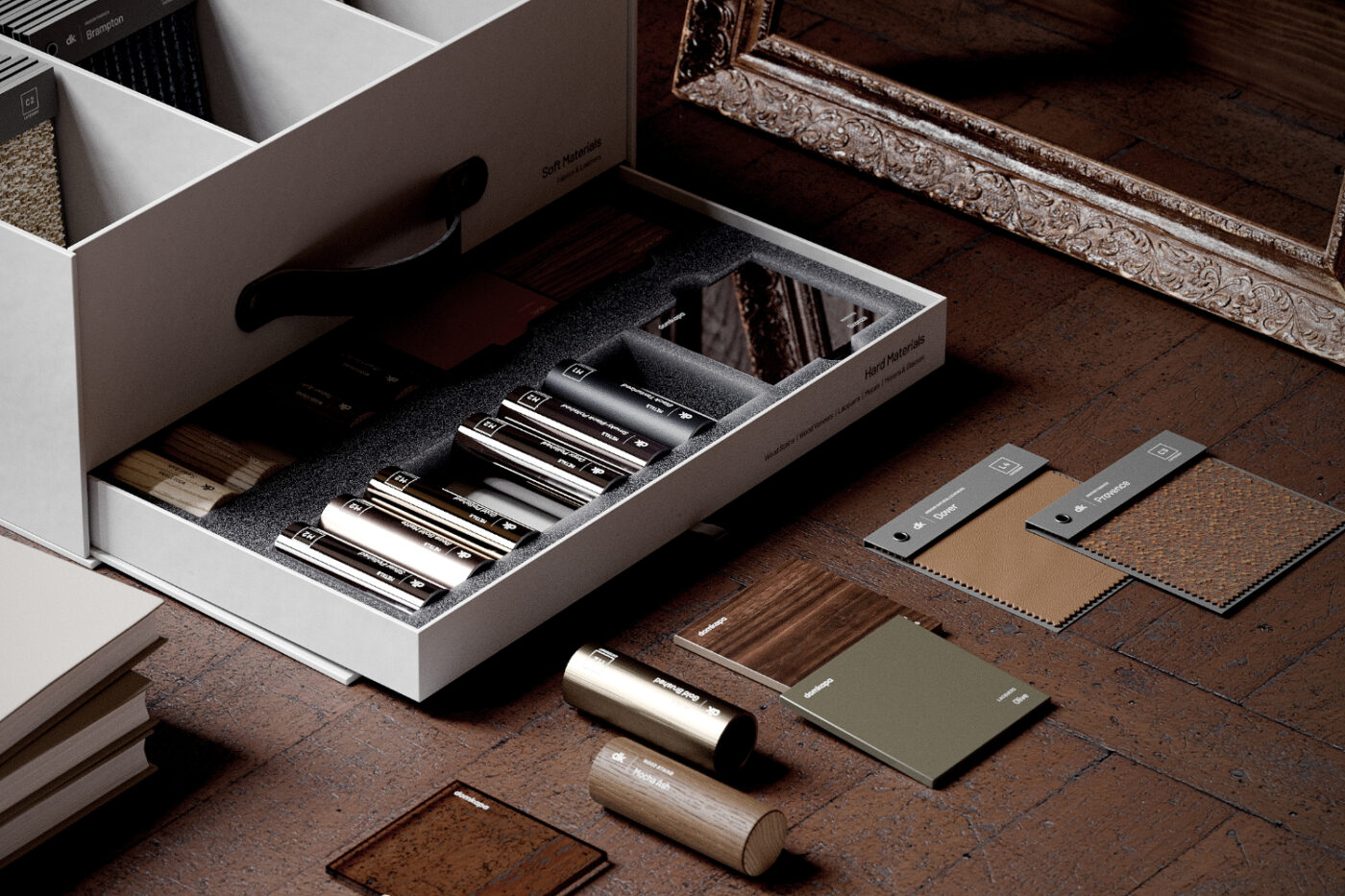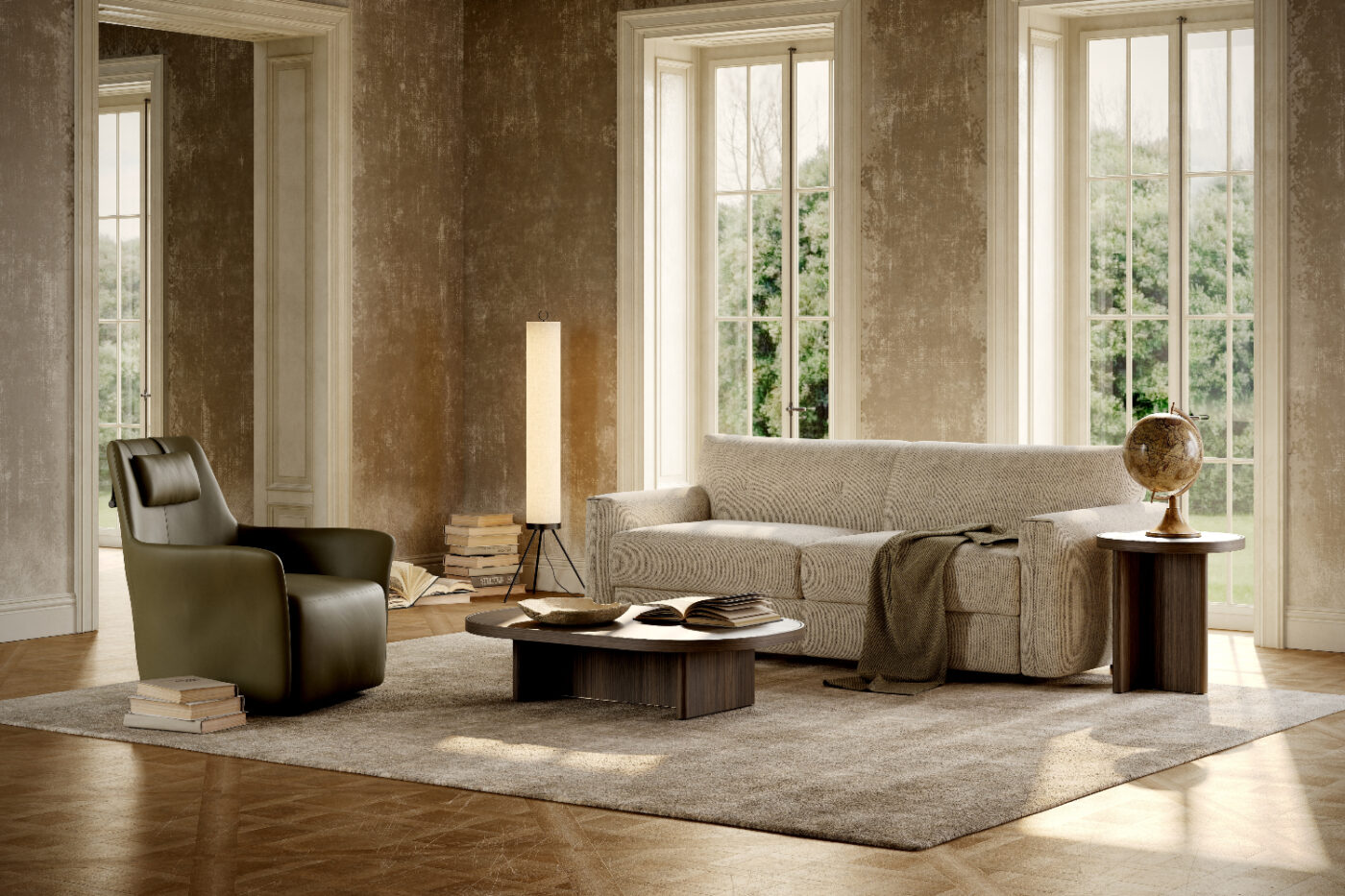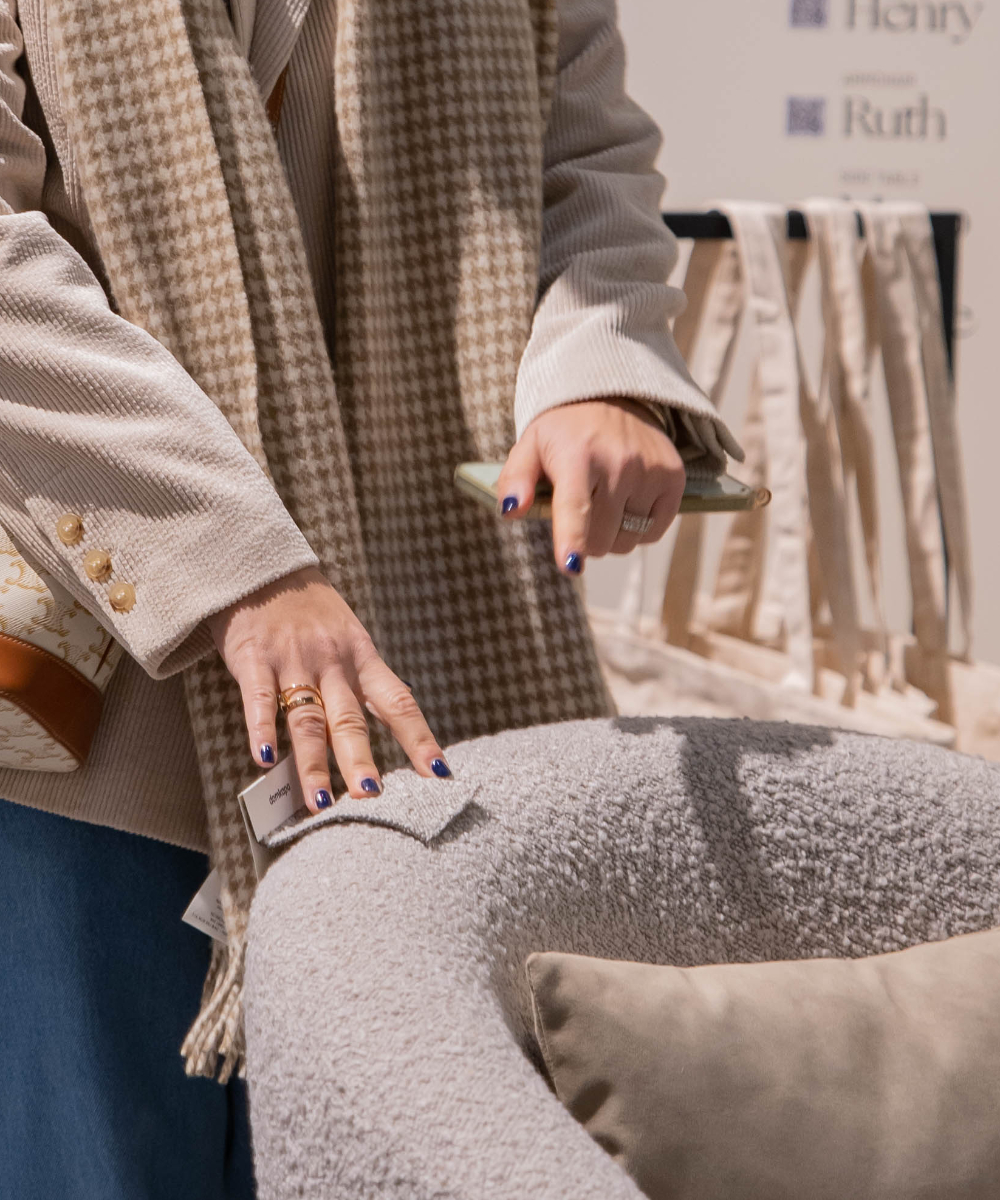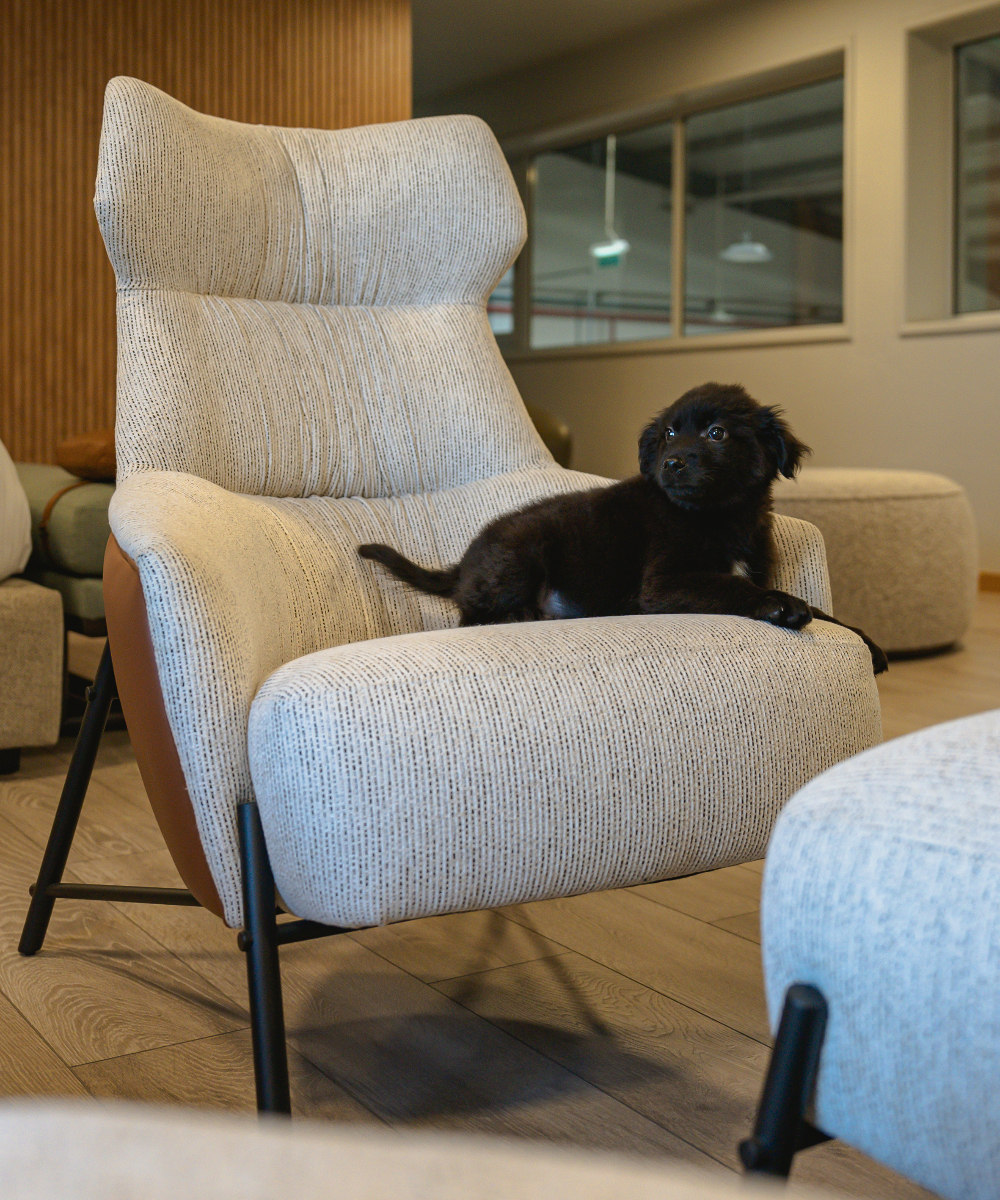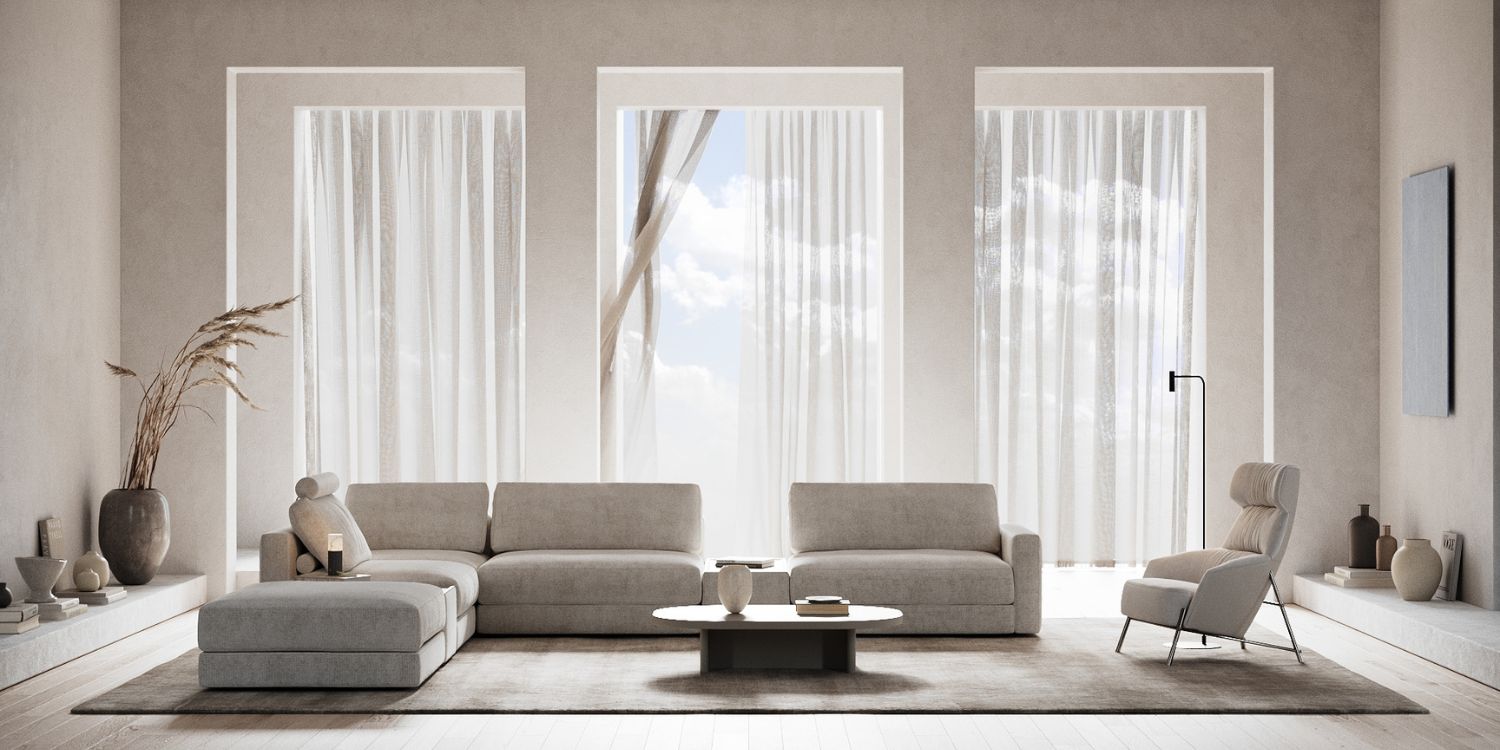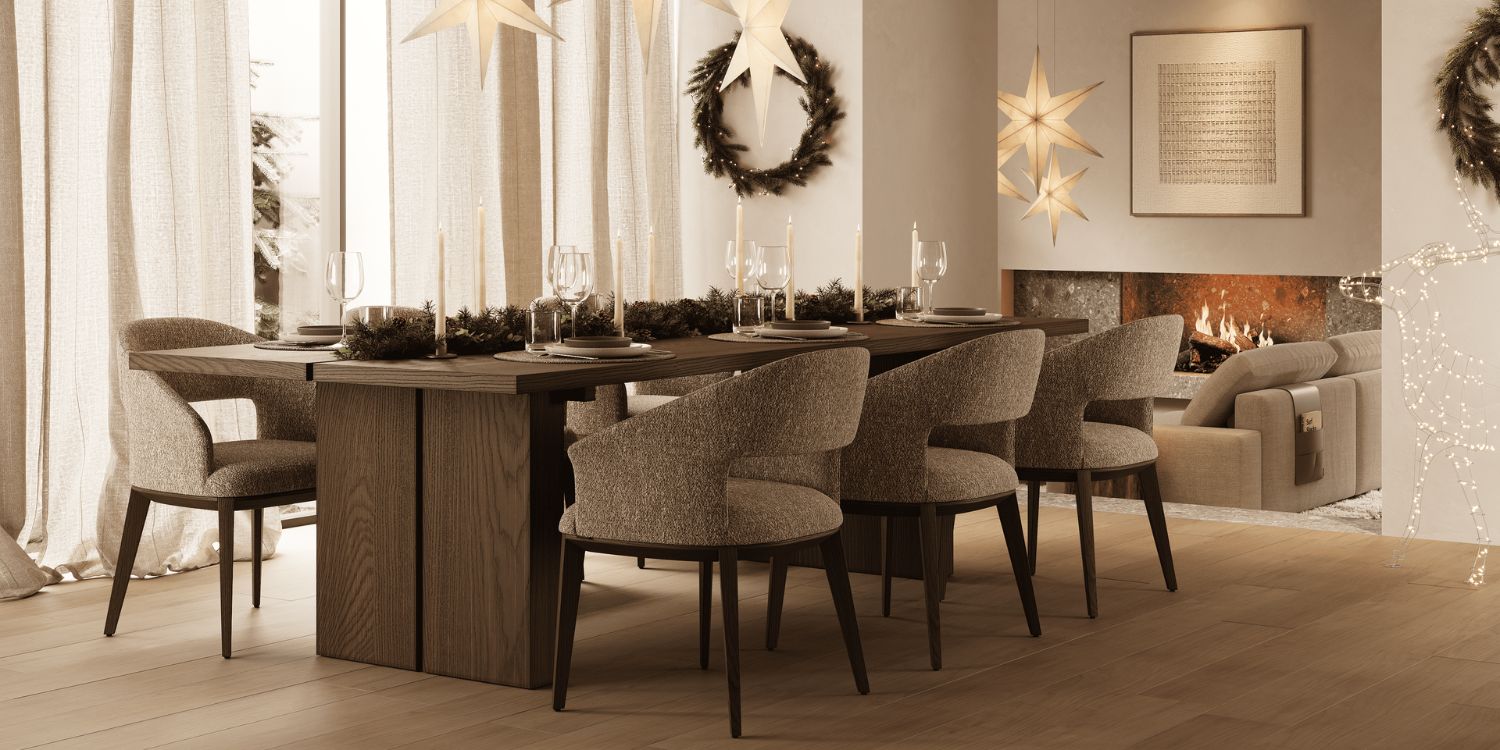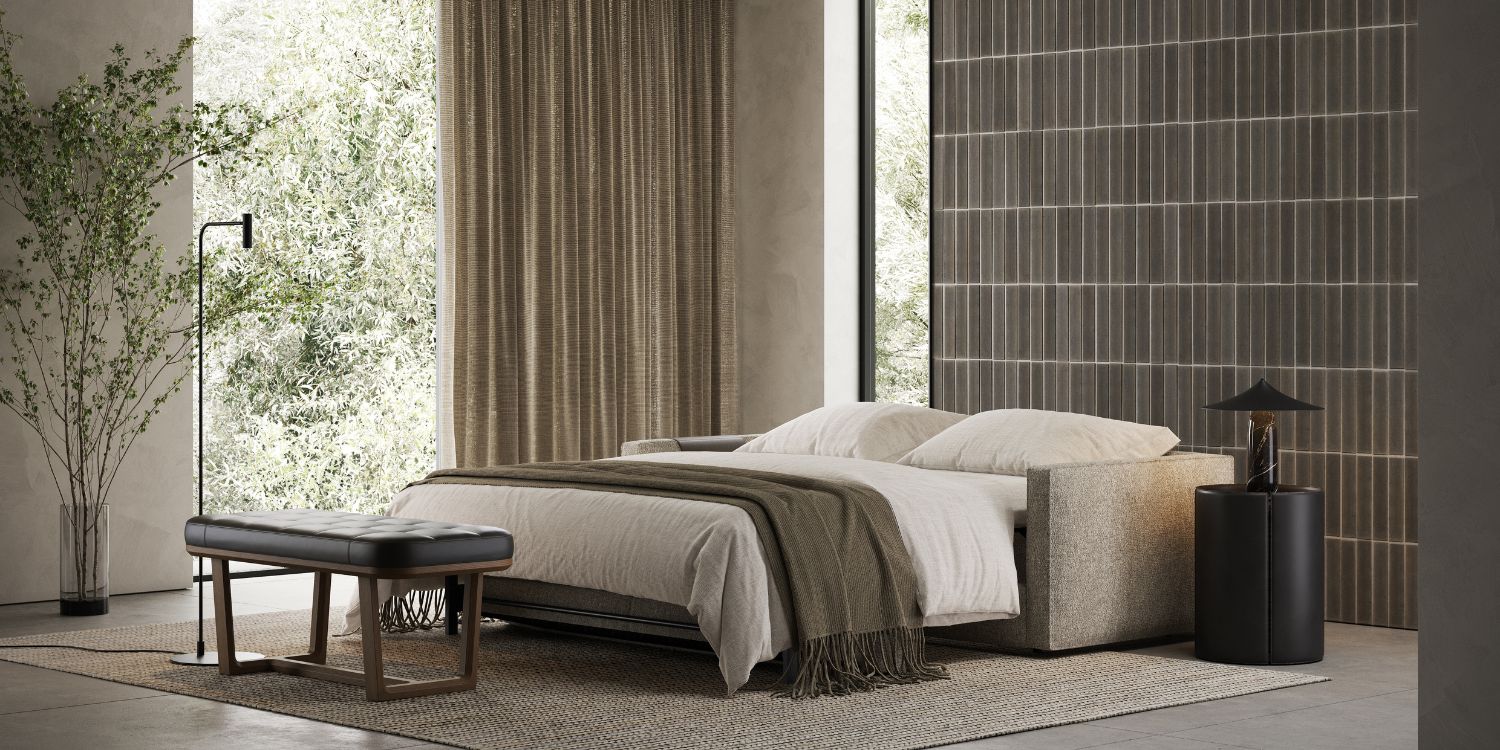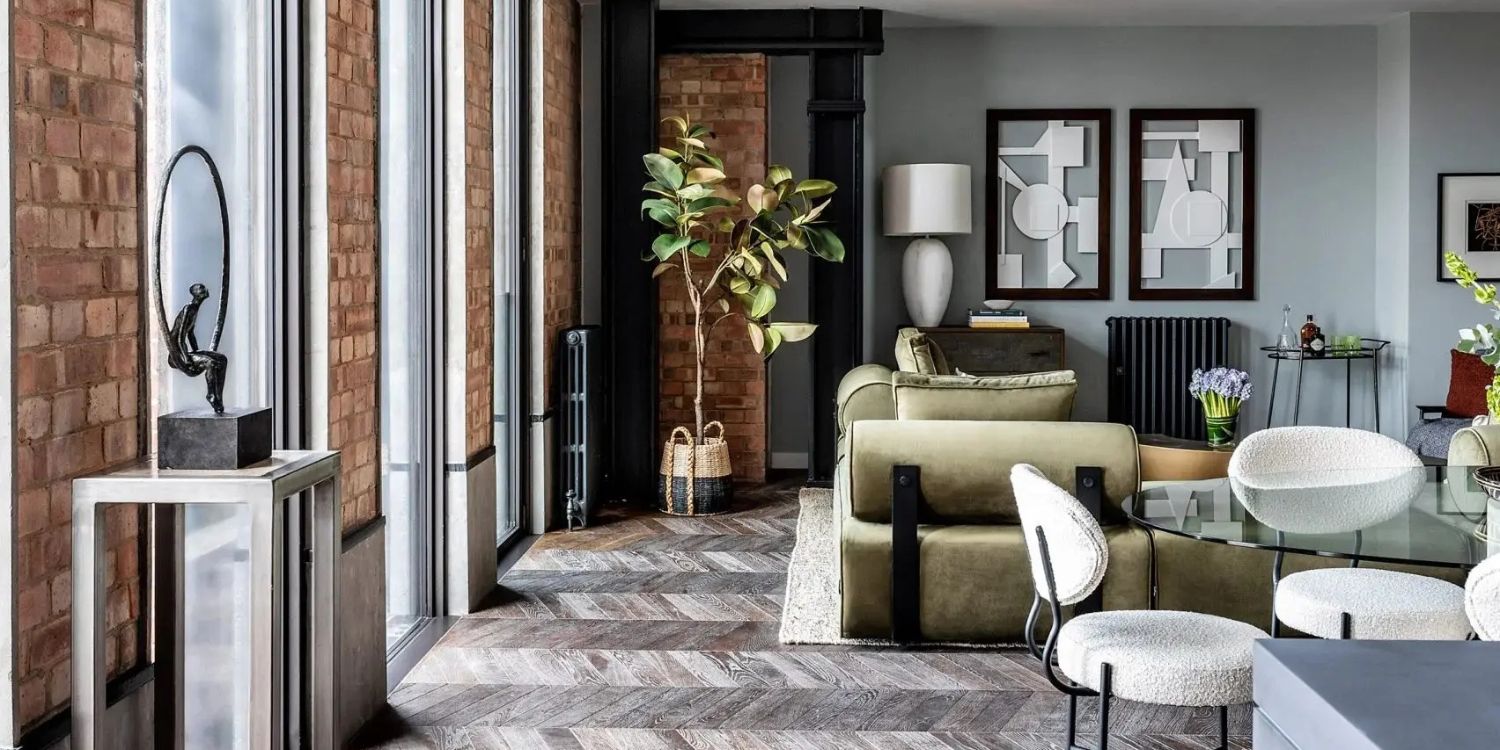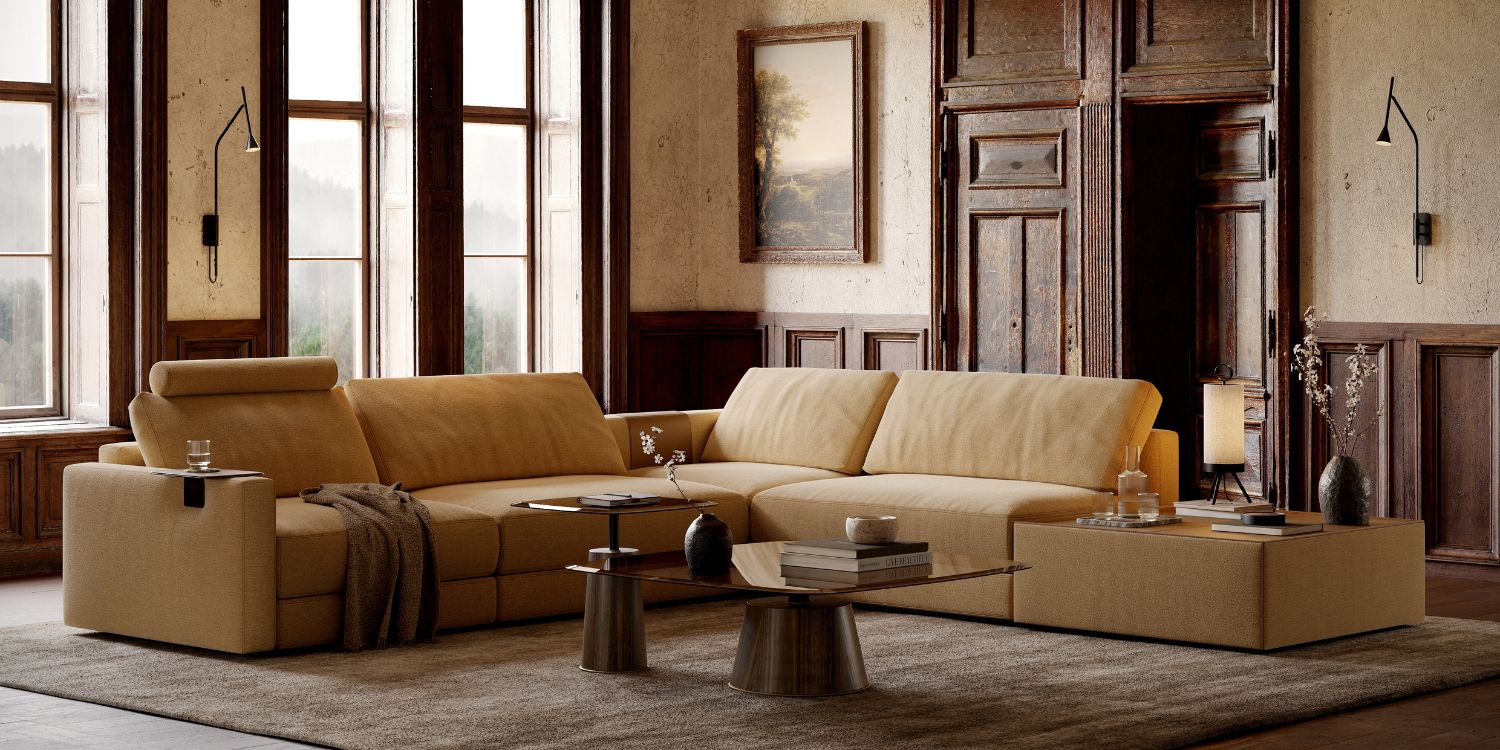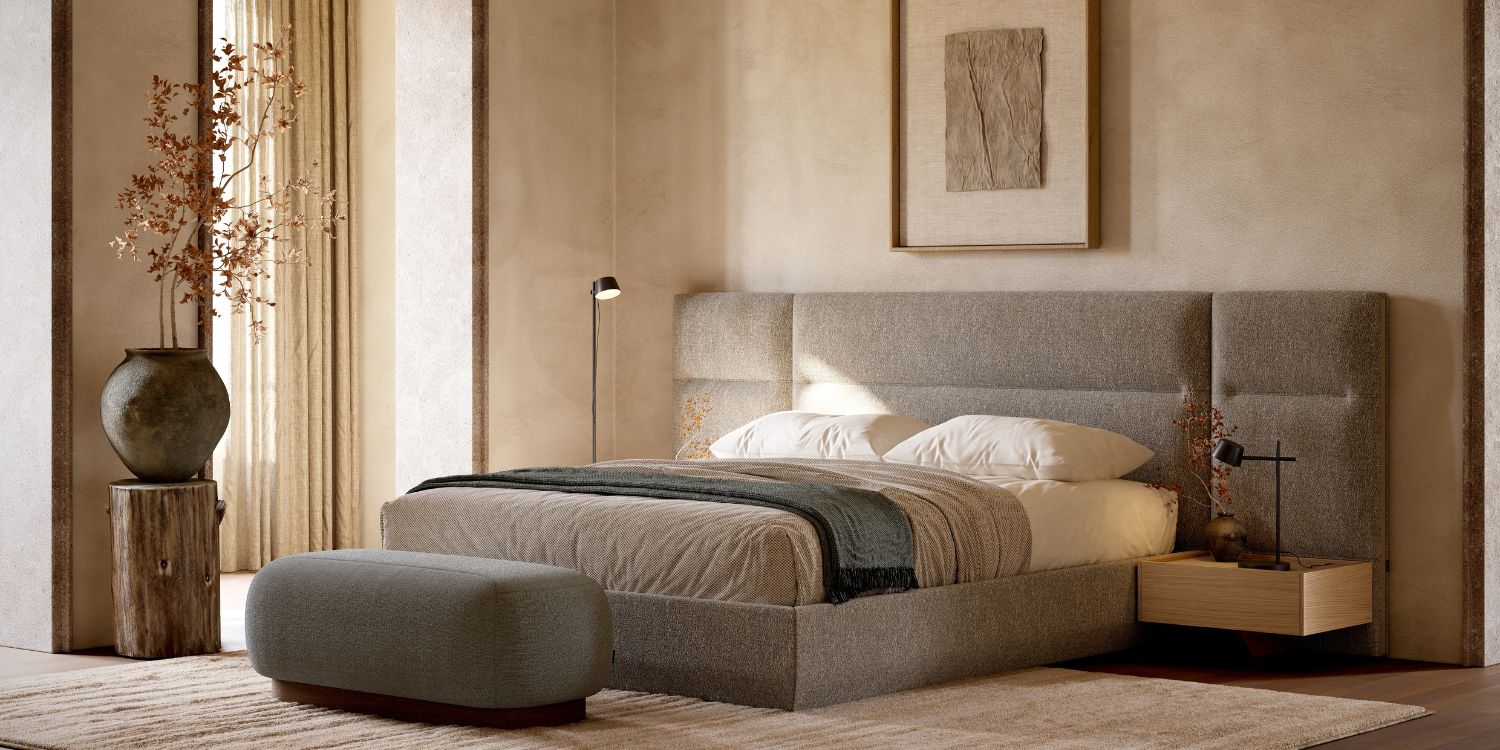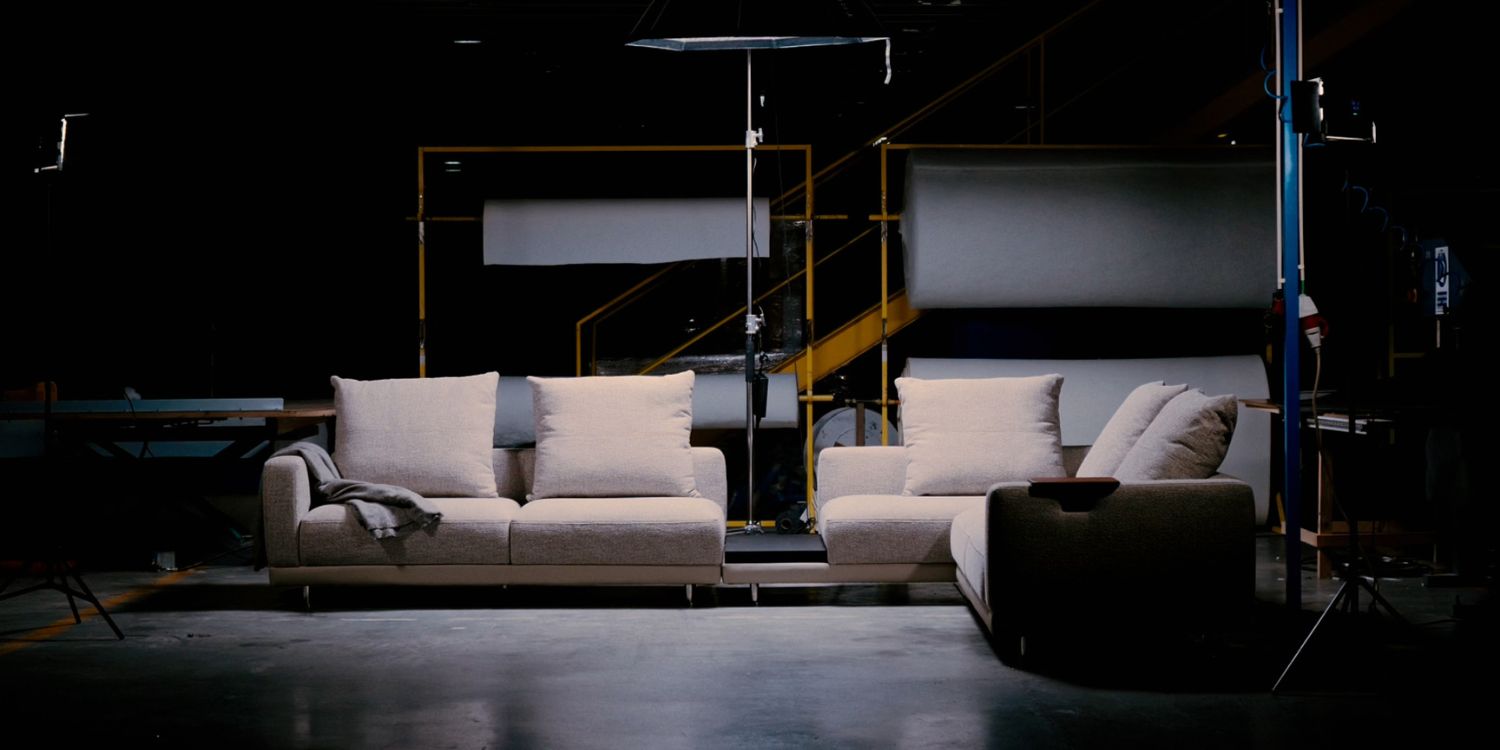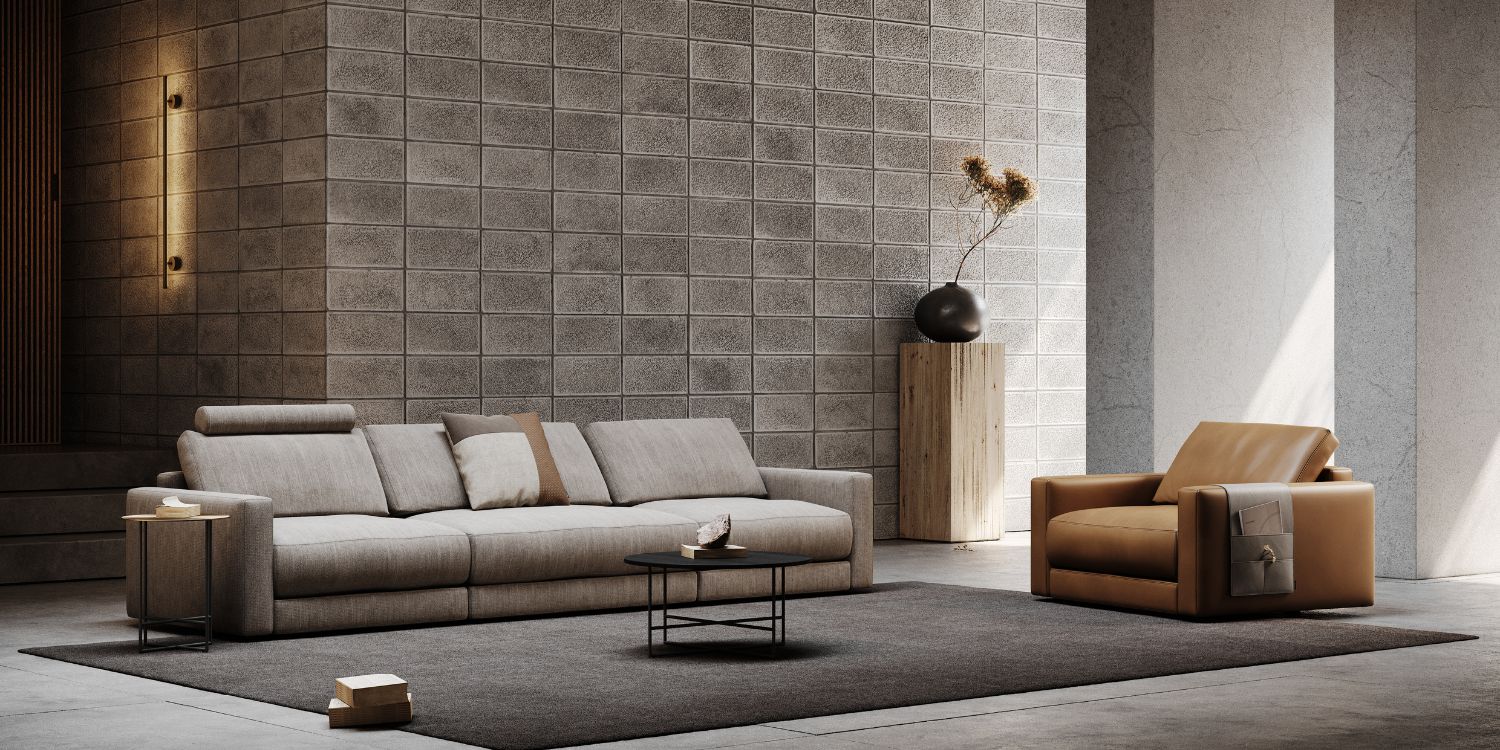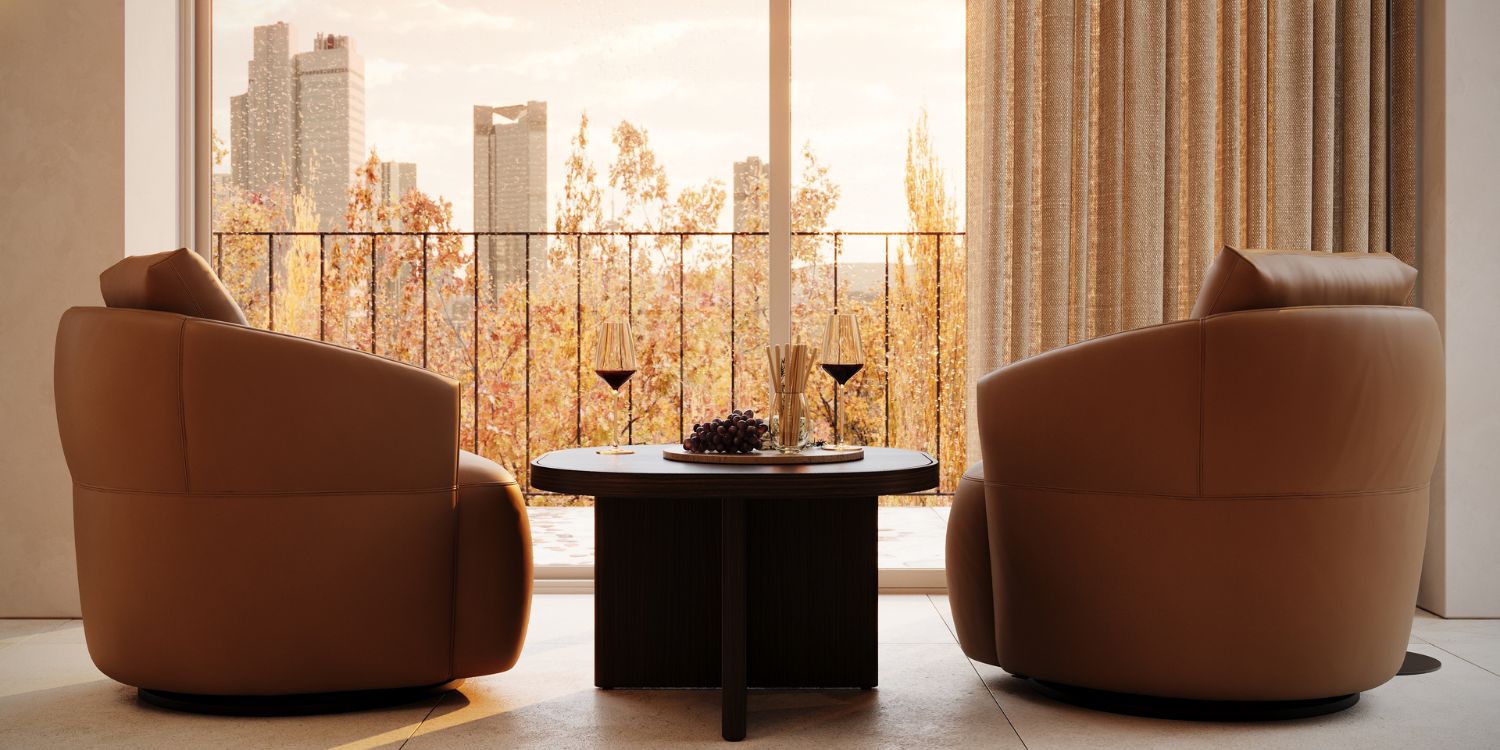Textiles in 2026 are entering an era of multidimensional design – where craft meets computation and sustainability is embedded at the molecular level.
The fabrics defining the next interiors won’t just look or feel different; they’ll behave differently. From responsive weaves to pigment technologies that interact with light, upholstery is evolving into the most dynamic storytelling medium in spatial design.
Let’s explore what the Textile Trends 2026 forecast reveals and how you can use these insights to stay ahead of the curve.
Textiles are storytelling tools. Through their colours, textures and weaves, they narrate how we live, work and unwind. Over the past few years, global design has moved from maximalist bursts of pattern to minimalist serenity, from industrial coolness to biophilic warmth. But as 2026 approaches, a new balance is emerging – one that blends tactile comfort with technological intelligence.
Why it matters:
Interior designers need to specify fabrics that will look relevant not just today, but for years to come. Clients expect upholstery to meet performance standards (stain resistance, sustainability, durability), while also conveying emotional resonance – softness, joy or sophistication. Knowing where textile design is heading allows you to design timeless yet trend-forward interiors.
In this article, we’ll break down the key directions shaping the textile landscape for 2026 – from colour evolution and pattern narratives to material innovation – and translate them into actionable design takeaways.
1. Colour Directions: Emotional Palettes for Changing Lifestyles
Colour psychology is driving the new textile narrative. After years of earthy neutrals, 2026 brings a more emotional palette that still feels grounded in nature.
- Grounded Neutrals 2.0:
Beige and taupe evolve into richer, tactile tones like Mocha Mousse, Burnt Clay and Desert Grey. These hues add depth without overwhelming a space – ideal for upholstery that serves as a quiet anchor. Expect these tones to dominate contract projects seeking calm sophistication.
- Serene Blues & Digital Greens:
Inspired by wellness and tech, blues take on powdery or oceanic undertones, while greens lean towards eucalyptus, pistachio and moss. These hues work beautifully in spaces that blend biophilic and futuristic elements – a growing demand in 2026 residential and hospitality design.
- Optimistic Accents:
In contrast, designers are reintroducing pops of colour – saffron, coral, lilac and ochre – to express creativity and warmth. Used sparingly on cushions or accent chairs, they bring a playful counterpoint to neutral foundations.
Design Tip: Combine emotional neutrals with small bursts of optimistic colour for layered storytelling. Think: a Mocha Mousse sofa dressed with coral piping or sage-green cushions – subtle, but memorable.
2. Patterns: From Imperfect Geometry to Artisanal Narratives
In 2026, pattern isn’t about symmetry or excess – it’s about emotion and authenticity.
- Imperfect Geometry:
Textiles are celebrating imperfection through hand-drawn lines, blurred grids and soft geometric motifs. This move toward the human touch speaks to our collective desire for craft over digital precision.
- Nature-Inspired Prints:
Expect patterns that echo organic growth – leaves, ripples, minerals and tree rings – translated through abstract forms rather than literal depictions. These motifs connect interiors to the natural world, supporting the ongoing biophilic trend.
- Heritage Redux:
Designers are also revisiting archival jacquards and vintage embroideries – but reimagined with updated palettes or larger scales. Think 1970s Italian glam or 1940s Parisian chic, reworked for contemporary settings.
Design Tip: For upholstery, balance pattern intensity with texture. Use small-scale motifs on armchairs or stools and reserve large-scale prints for statement headboards or lounge pieces.
3. Weaves & Textures: Tactility Takes Centre Stage
If one word defines Textile Trends 2026, it’s touch. Consumers crave fabrics that feel personal, protective and grounding. In residential and hospitality projects, texture becomes the new luxury.
- Bouclé Beyond the Basics:
The bouclé trend isn’t going anywhere – it’s simply evolving. Expect sleeker, more refined loops, often blended with metallic threads or tonal contrasts for depth. Think “couture comfort”.
- Woven Reliefs & Dimensional Surfaces:
From ribbed chenilles to raised herringbones, textiles are embracing 3D tactility. These structures not only add visual richness but also enhance acoustic comfort – a valuable bonus in open-plan environments.
- Matte Velvets & Soft Microfibres:
Velvet remains a designer favourite but shifts towards matte, velvety-touch finishes that resist marks and adapt well to light. Microfibres with similar hand-feel but higher durability are becoming the go-to for contract use.
- Sustainable Blends:
Eco-awareness drives innovation in yarns: recycled wools, organic cottons and plant-based synthetics dominate. Expect more certifications and transparent sourcing stories – a decisive factor for conscious clients.
Design Tip: When specifying fabrics, evaluate tactile and performance needs. A textile’s emotional impact matters as much as its Martindale score.
4. The Rise of Smart & Functional Fabrics
Functionality is quietly revolutionising textiles. By 2026, smart performance fabrics will no longer be niche; they’ll be expected.
- Easy-Clean & Pet-Proof:
Technology-driven coatings and fibre innovations now offer stain resistance, water repellence and scratch durability without compromising softness. These fabrics are redefining family and hospitality interiors alike.
- Temperature-Regulating Weaves:
Adaptive textiles that respond to body heat or ambient conditions will find increasing use in bedding, upholstery and hospitality applications – creating comfort in all seasons.
- Antimicrobial & Allergen-Free Finishes:
Post-pandemic consciousness keeps hygiene top-of-mind. Fabrics with built-in antimicrobial protection and hypoallergenic properties are becoming standard requests for contract projects.
Design Tip: Embrace functionality as part of the narrative – not just a spec sheet. Educate clients on how advanced textiles elevate comfort and sustainability.
5. Craftsmanship Meets Technology
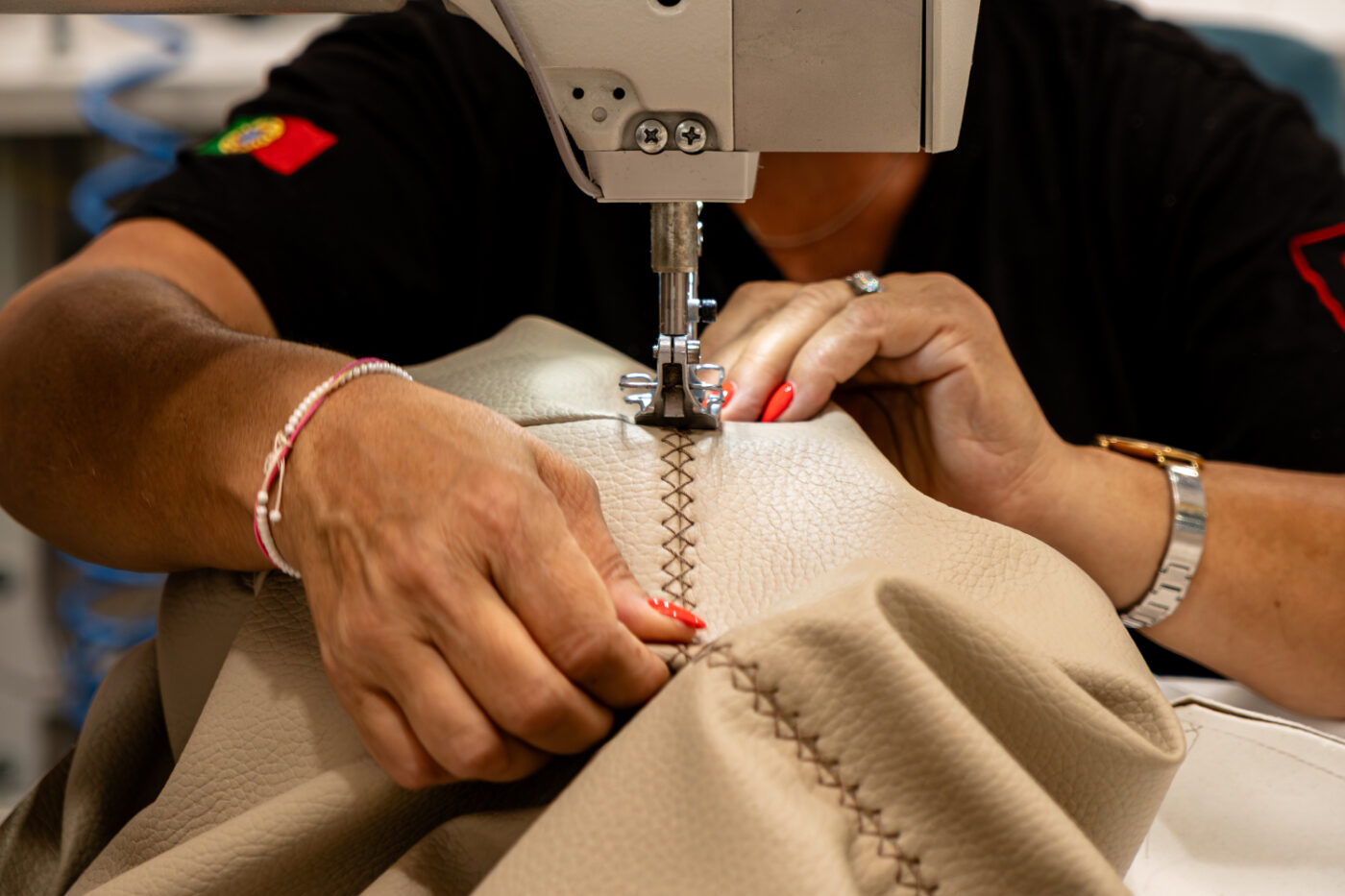
2026 marks the fusion of two worlds: digital innovation and artisanal craftsmanship.
We’re seeing digital jacquards woven to mimic handmade embroidery, laser-cut patterns inspired by traditional lace and 3D-printed weaves designed for tactile play.
Designers who merge these realms will set the tone for next-generation interiors – spaces that feel crafted yet contemporary.
So, how can interior designers leverage these Textile Trends 2026 in real projects?
1. Curate “Tactile Stories” for Clients
Rather than choosing fabrics by colour alone, build moodboards around tactile emotion – comfort, serenity, optimism, luxury. Let clients experience materials by touch during presentations. It’s a sensory approach that wins trust and drives decisions.
2. Mix Scales, Not Just Materials
Pair large-scale textures (bouclé, velvet) with finer weaves (linen, twill) to create depth. The interplay of scales – coarse vs. smooth, matte vs. lustrous – defines sophistication in 2026 interiors.
3. Specify with Longevity in Mind
Choose textiles that balance trend relevance and durability. Opt for neutral foundations that can evolve with accessories – a principle echoed in timeless upholstered pieces like Domkapa’s Olivia Sofa or Edward Sofa, which adapt effortlessly to new fabric directions each year.
4. Think Beyond Upholstery
Apply textile innovation to wall panels, headboards and acoustic solutions. With 3D weaving and performance materials, soft surfaces now extend far beyond seating.
5. Tell the Sustainability Story
Designers who articulate a material’s ethical journey – from recycled fibres to local production – connect emotionally with modern clients. 2026 textiles are about transparency as much as texture.
Textile Trends 2026 reaffirms that the future of fabric design lies in balance – between emotion and performance, digital precision and handcrafted warmth, timeless neutrals and expressive colour.
For interior designers, these insights offer more than aesthetic inspiration; they’re tools for differentiation. When you can specify the right upholstery early, you stay ahead of the curve and ahead of the competition.
As you plan upcoming projects, remember:
- Texture tells a story.
- Colour sets emotion.
- Innovation ensures longevity.
Master those three and your designs will resonate far beyond 2026.
YOU MAY ALSO LIKE: From Colour To Craftsmanship: 6 Dining Room Trends For 2026
We are working every day to bring you the most stylish ideas to fulfil your inspiration and to create the best interior design projects, so feel free to follow our Instagram Page and subscribe to our newsletter.


